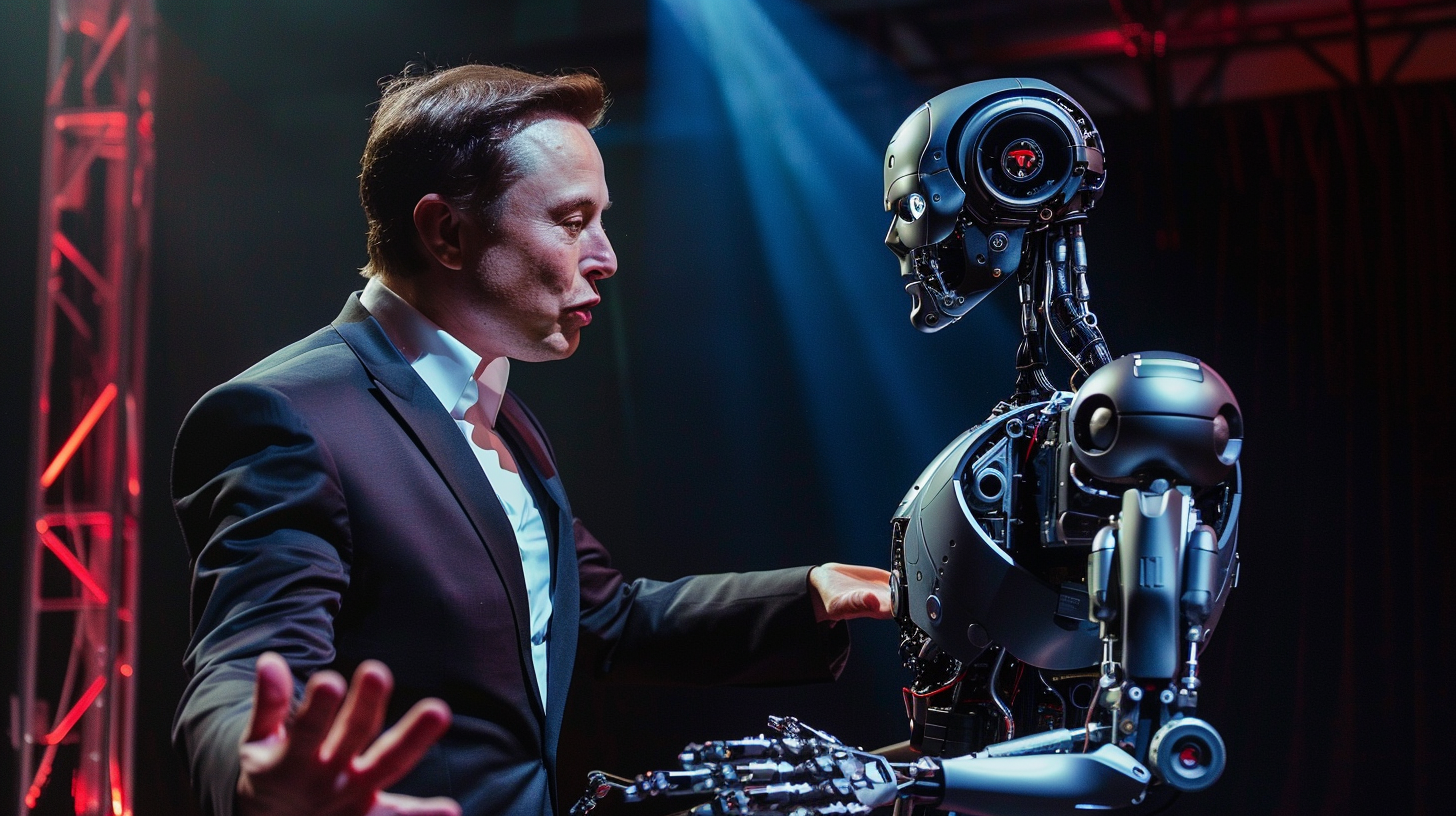Tesla to Introduce Humanoid Robots in Factories Next Year31 July 2024 By Johnber 
NewsTogether

Elon Musk, the CEO of Tesla, announced that the electric car company will begin producing and utilizing humanoid robots starting next year. These robots, initially used within Tesla, are expected to be available for sale by 2026. This move is part of Musk's broader strategy to cut costs and streamline operations in the face of weakening demand for Tesla's electric vehicles.
Financial Challenges and Strategic Shifts
Tesla's financial report for the three months ending in June highlighted significant challenges. Profits dropped from $2.7 billion to less than $1.5 billion, a near 50% decrease. The decline in profits was primarily attributed to a slump in car sales, despite Tesla implementing various price cuts and incentives to attract customers. Automotive revenue fell by 7% year-over-year during the quarter. However, the company managed a modest overall revenue increase of 2%, largely driven by growth in its energy storage business. This financial strain has led to a renewed focus on cost reduction across the company, as emphasized in Tesla’s ____update to investors.
Introduction of Optimus: The Humanoid Robot
Tesla's humanoid robot, named Optimus, is designed to handle tasks deemed unsafe, repetitive, or boring for human workers. Musk envisions these robots as a transformative addition to Tesla's factories, enhancing efficiency and safety. Initially, these robots will be deployed internally within Tesla's operations starting next year. By 2026, Tesla plans to ramp up production and offer these robots to other companies.
On his social media platform, X (formerly known as Twitter), Musk expressed confidence in the timeline for Optimus. He noted that low production of these robots for internal use would commence next year, with mass production for other companies anticipated by 2026. Musk has set an ambitious target price of less than $20,000 per robot, aiming to make them accessible to a broad range of industries.
Competition in Humanoid Robotics
Tesla is not alone in the race to develop humanoid robots. Other major companies, including Honda and Boston Dynamics, are also advancing their own humanoid robotics programs. Honda has a long history of developing humanoid robots, with its ASIMO robot being one of the most recognized. Boston Dynamics, known for its dynamic and agile robots, has also made significant strides in this field. The competition is fierce, with each company aiming to create robots that can significantly impact industrial operations and everyday life.
Broader Technological Focus
Musk’s vision extends beyond humanoid robots to encompass a broader range of advanced technologies, including artificial intelligence and autonomous driving. Despite the current challenges in the electric vehicle market, Tesla remains committed to pushing the boundaries of innovation. The company continues to work on its long-awaited robo-taxi project, which Musk previously claimed would be operational by 2020. The unveiling of the robo-taxi, initially scheduled for August 8th, has been delayed, but Tesla assures that work is ongoing. The timing of the rollout is dependent on regulatory approval, which remains a significant hurdle.
Implications for the Future
The introduction of humanoid robots like Optimus could have profound implications for the future of industrial operations. These robots are expected to take on tasks that are currently performed by human workers, particularly those that are dangerous or monotonous. This shift could lead to increased efficiency and safety in factories, as well as cost savings for companies. Additionally, the broader adoption of humanoid robots across various industries could drive significant advancements in robotics and AI technologies.
Musk’s ambitious vision for Tesla includes not only revolutionizing the electric vehicle market but also leading in the development of advanced robotics and AI. While his timelines have often been met with skepticism, Tesla's continued innovation demonstrates a commitment to transforming how technology interacts with everyday life. The development of Optimus and other advanced technologies reflects Tesla’s strategy to stay at the forefront of innovation, despite the financial and competitive pressures it faces.
Conclusion
As Tesla navigates through financial challenges and competitive pressures, the introduction of humanoid robots marks a significant step in the company's evolution. If successful, these robots could transform industrial operations and open new markets for Tesla. While Musk's ambitious timelines have been met with skepticism in the past, the development of Optimus showcases Tesla’s commitment to leading the charge in innovative technologies. This move aligns with Musk’s broader strategy to integrate advanced technologies into everyday applications, potentially set____ting a new standard for industries worldwide.
Keywords
humanoid: a robot with human-like characteristics.
announce: to make something known publicly.
initially: at the beginning.
utilize: to use something for a particular purpose.
financial: relating to money or how money is managed.
strategy: a plan of action designed to achieve a long-term goal.
streamline: to make something more efficient and effective.
operations: the activities involved in managing and running a business.
decline: a decrease or reduction in something.
implement: to put into effect.
incentive: something that encourages a person to do something.
attract: to draw by appealing to interest or desire.
revenue: income generated from normal business operations.
modest: not large in size or amount.
internal: inside or within.
ramp up: to increase or cause to increase.
accessible: able to be reached or easily obtained.
industries: specific branches of business or manufacturing.
competition: the activity of competing with others.
recognize: to identify someone or something from previous encounters.
agile: able to move quickly and easily.
dynamic: characterized by constant change or activity.
broader: wider in scope.
boundaries: limits or edges that define something.
innovation: the introduction of new ideas or methods.
significant: sufficiently large or important to be worthy of attention.
ongoing: continuing without interruption.
hurdle: an obstacle or difficulty that needs to be overcome.
profound: very great or intense.
efficiency: achieving maximum productivity with minimum wasted effort.
adoption: the act of starting to use something new.
advancements: developments or improvements.
skepticism: doubt as to the truth of something.
commitment: a pledge or promise to do something.
transformation: a thorough or dramatic change in form or appearance.
timelines: a schedule of events and occurrences.
integration: the process of combining parts into a whole.
potentially: with the possibility of happening or becoming something.
All rights reserved by 비투게더
*printable 자료와 문제를 원하시면 아래 링크로!
|